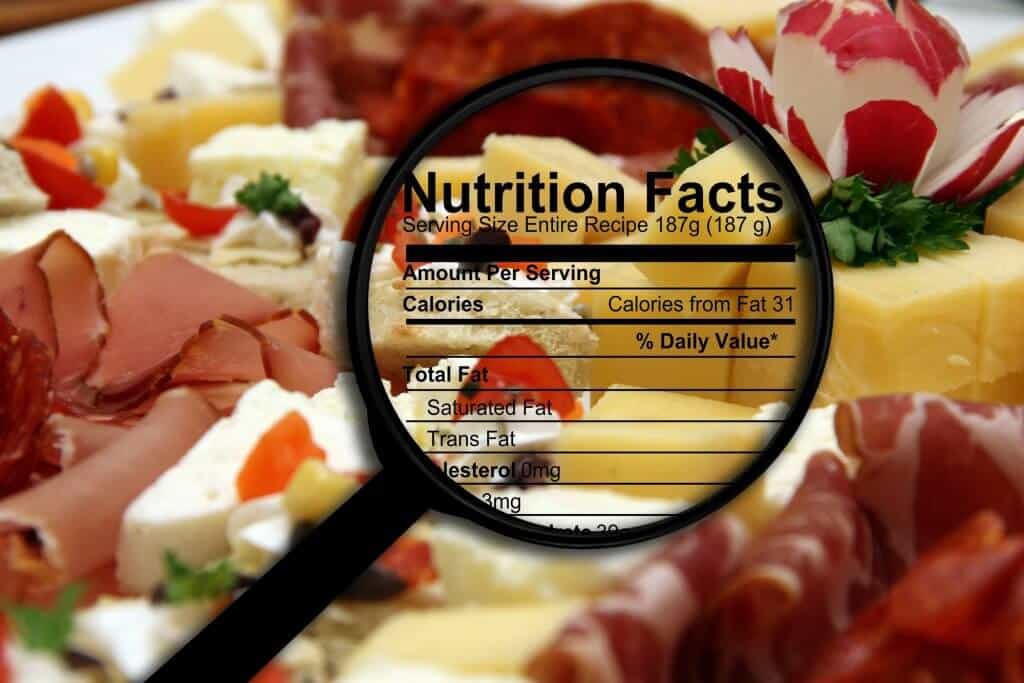
You might have often wondered if you should be counting calories while on the Omad Diet.
Well, should you be?
The answer:
If you are following the “4 ones” rule while eating one meal a day, there is no need to count calories.
There are also many other reasons why counting calories is not the best choice while eating one meal a day and can lead to dietary failure.
Let’s take a look at what calories are, why you shouldn’t count them, and supporting case studies.
[no_toc]
The Nature of Calories
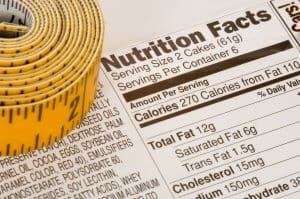
Calories are a measurement of how much energy is required to digest any food when it is eaten.
The calorie level of your food is affected by a variety of factors, including the sugar and fat in each serving.
It is also affected heavily by the density and the nutritional value of the food.
Strictly speaking, a food calorie is what is known as a kilocalorie in the scientific community.
A real calorie indicates the amount of heat that is required to increase the temperature of one gram of water by a single degree on the Celsius scale.
Food calories or kilocalories are 1,000 of these normal calories. As a result, they indicate how much heat is needed to raise 1,000 grams of water by one degree Celsius.
All the different influences on a food’s level of calories make it very difficult to count calories accurately.
Although food labels will indicate the number of calories that are likely in a food product, that count can be inaccurate.
That has nothing to do with misleading claims by the manufacturer, but merely the nature of calories.
While all food has some measurement of calories, figuring them out can be difficult.
Even worse, not all of these calories are made equal. There are both healthy and empty calories to consider.
The differences between these calories are significant to know.
Healthy Calories Versus Empty Calories
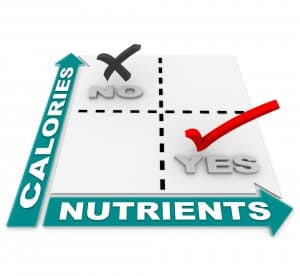 Healthy calories are those that are heavily saturated with vitamins and nutrients. They may be paired with sugar or fat but provide more benefits than they do downsides.
Healthy calories are those that are heavily saturated with vitamins and nutrients. They may be paired with sugar or fat but provide more benefits than they do downsides.
For example, foods such as fruit and vegetables consist almost entirely of healthy calories. That’s because they are filled with many vitamins and nutrients and contain almost no fat.
By contrast, empty calories are almost utterly devoid of nutritional content.
Most junk food is filled with a lot of fat, sugar and is very rich in calories.
However, they have very little nutritional value when compared to other types of foods, meaning that they fill you up without improving your health.
Food Labels Can Be Deceptive
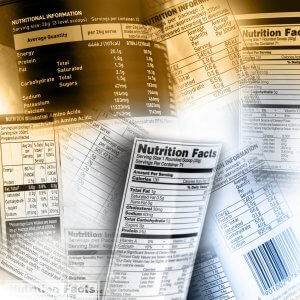 Another common issue is the deceptive nature of food labels.
Another common issue is the deceptive nature of food labels.
Many would expect these labels to provide 100% accuracy in their descriptions of the contents.
And while they might be mostly right, many issues can make food labels very deceptive.
This problem is particularly potent if you are trying to use them to manage your weight.
That’s because manufacturers often use misleading or even deceptive phrasing on their products that make you think a food type is healthier than it is for your body.
Even worse, they might emphasize the product’s low calories but not discuss how unhealthy the product otherwise is for you.
It is critical to understand a few ways that food labels can be misleading when it comes to counting calories and understanding a food’s nutritional content.
-
Nutrients are Often Exaggerated
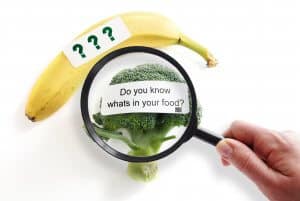
While food manufacturers have to be precise with their labeling, it is still possible for them to exaggerate the nutritional value of their food products.
For example, various types of sugary cereal have labels that highlight their high levels of calcium and other types of vitamins and grains.
However, these labels fail to note that these cereals also have a lot of sugar and other unhealthy items.
As a result, the label can be misleading if you aren’t reading it very carefully.
You might also deceive yourself by missing excessive calories and focusing specifically on the positives available in food.
For example, you might tout the high levels of fiber that are in a product without paying attention to the fact that the product could contain mostly unhealthy calories.
Instead of focusing on the calories on your food, take a look at the vitamins and nutrients on the label. Try to pay attention to any advertising gimmick and focus specifically on the healthiness of the food.
In this way, you can create a meal that provides you with a maximum amount of healthy calories.
-
Pay Attention to the Fine Print
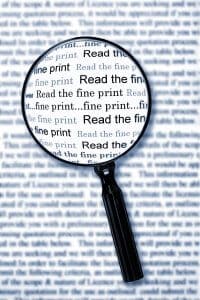
One of the biggest lessons to learn from food labels is that the most important information about the food is typically in the fine print.
You might find, though, that the fine print on the label is tough to read.
The background color may make the fine print rather muddy, and the tiny print may be nearly impossible to read without a magnifying glass.
Those design choices are not accidental.
Many food manufacturers will often condense their fine print into nearly illegible scrawls that consist entirely of uppercase letters.
That’s because studies have shown that printing fine print in upper case letters makes it more difficult to read.
Also, putting the text up against a red or dark brown background makes it nearly impossible to read.
As a result, you may be missing out on vital information about the food, such as the fact that it contains unhealthy items, such as fat, that you may not have been expecting.
You may also miss out on the fact that all of those bold and eye-catching health claims are “not supported by medical science,” which is a fact these companies have to print on their labels.
-
Misleading Claims

Like many of us, you probably bought a food product because its label said that it “helps to improve heart health” or something similar.
These claims can often be exaggerated.
For example, a product may contain a high amount of healthy fiber and state that it is “heart healthy” because a diet rich in fiber has been shown to promote a healthier heart.
However, the label on the product may then fail to state that it contains high levels of saturated fat and sodium.
These higher levels are not healthy for your heart and are perhaps more damaging than the fiber is healthy.
In spite of that, the food manufacturer can put “helps to improve heart health” because it contains fiber.
Then, they print a fine-print disclaimer (that is hard to read) stating that it may not help heart health.
You can get past these tactics by focusing strictly on the vitamins, minerals, and fat that you find in food.
-
Other Misleading Claims Common on Food Labels
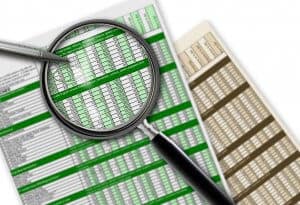 Here are a few more ways misleading labels can affect the accuracy of calorie counting:
Here are a few more ways misleading labels can affect the accuracy of calorie counting:
High-Fiber Foods
- High-Fiber Foods – Some manufacturers may claim that foods are high in fiber. However, the food may be high in isolated fibers and in purified powders, which are not as healthy as real fiber.
Healthy-Sounding Names
- Healthy-Sounding Names – Most of us have purchased a product because its name sounds healthy. For example, a product like “Vitamin Water” probably sounds healthy, but it contains high levels of sugar.
Misleading Serving Sizes
- Misleading Serving Sizes – Serving sizes are critical to consider when making your daily meal. You might read a label on a can of soup and see that it contains just 150 calories per serving. However, there are two servings in the can, which means you are getting 300 calories if you eat the whole can of soup.
Any Use of the Word “Free”
- Any Use of the Word “Free” – The word “free” is often added to many types of foods as a way of attracting buyers who don’t carefully read the label. For example, a product is fat-free if it contains less than 0.5 grams of fat per serving. However, the calorie level may be higher than expected or it may contain high levels of unhealthy sugar.
Natural or Organic Foods
- Natural or Organic Foods – Natural and organic sound like great labels for your food, but they can be misleading. For example, the FDA doesn’t strictly define what foods are natural. And while organic is more precise, it can also be tweaked to mean just about anything.
Fresh Foods
- Fresh Foods – Manufacturers often state food is “fresh” because it is raw and unprocessed. In fact, this labeling does follow strict FDA guidelines. However, that doesn’t mean the food was picked or prepared recently and could be months old.
What Studies on Food Labels State

In a study entitled “The Effects of Nutrition Knowledge on Food Label Use: A Review of the Literature,” food labels were carefully studied.
The basis of the review was the idea that a better understanding of nutritional guidelines helped people use food labels more effectively.
They studied several different research projects and concluded that understanding nutrition and the nature of food labels improved a person’s ability to use them.
Unfortunately, a majority of people poorly understand food labels because they don’t understand proper nutritional guidelines.
In fact, the study found that many people who read labels improperly looked at the calorie count to choose the foods that they ate.
As a result, they were often picking foods that seemed healthy but weren’t.
Another study, titled “Are Food Labels Effective as a Means of Health Prevention?” found that food labels could be useful as a method for preventing obesity and other health problems.
However, they stressed that it was the proper use of these labels that helped improve their effectiveness.
And in another study called “Transparency in Food Labeling,” it was found that food labels are often explicitly misleading in the number of calories and fat they contain.
As a result, people were misusing labels even if they understood nutrition.
While food manufacturers cannot lie about what is in their product, they can manipulate the information to make it seem healthier.
For example, take a look at a bag of potato chips. It might trumpet the fact that it contains just 150 calories per serving.
However, a serving is usually only 11-12 potato chips, meaning a bowl of chips is typically 450-600 empty calories.
Obsessing Over Calories is an Unwise Choice
 It is important to take a look at a few reasons why calorie counting is such a problem.
It is important to take a look at a few reasons why calorie counting is such a problem.
These simple concepts are fairly easy to understand and will give you a better insight into this issue.
Depression and Anxiety are Linked to Calorie Counting
Several studies have indicated that calorie counting is not healthy.
That’s because people often obsess over it or get anxious about what they eat.
As a result, they suffer from higher levels of anxiety and depression than those who don’t track their calories.
Calorie Counting May Not Lead to Weight Loss
One of the biggest issues you’re going to run into when counting calories is a lack of success.
That’s because it may not lead to any weight loss at all.
For example, a study published by JAMA found that calorie counting was not as successful as simply eating healthy vegetables and whole foods while not worrying about calories.
People May End Up Restricting Healthy Foods
One mistake that many people make when counting calories is putting a restriction on healthy foods.
By focusing too much on what calories are in the food they are eating, they may end up neglecting many other healthy foods.
They then cut out healthier foods that they may not enjoy, such as vegetables.
As a result, they have a very unhealthy and unbalanced diet.
Some Experts Believe It Leads to Eating Disorders
In several studies, it was found that counting calories can contribute to many eating disorders.
Bulimia and anorexia are all tied heavily to calorie counting.
Even worse, many specialists consider calorie counting to be a form of eating disorder.
This is because it can become an obsession that can dictate your diet and even various elements of your life.
Nutrient Levels Vary Depending on the Season
Precise calorie counting is a difficult task to accomplish because a food’s calorie level may vary depending on the season in which it was picked or prepared.
For example, many fruits must be canned through the winter to avoid spoilage.
However, these foods will gradually lose nutrients and calories, meaning that your true nutrient level can vary wildly.
What to Do Instead of Counting Calories

There are several steps that you can and should take instead of counting calories while eating one meal a day
These steps are designed to take over your reliance on calorie counting and will improve your Omad Diet success.
Just a few of the most important tips to consider when eating one meal a day include:
- Pay Full Attention to Your Meal (focus on a balanced healthy plate)
- Notice How Your Body Feels When You Eat
- Focus On Slowly Eating Your Meal
- Appreciate How the Food Tastes and Smells
- Choose Healthy Foods You Truly Love
- Eat Different Types of Foods Every Day
- Notice What Foods Your Body Craves
- Adjust Your Omad Diet Based on Your Body Needs
- Exercise Regularly to Improve Your Metabolism
Other techniques, such as always using utensils, can force you to slow down while eating. They also limit how much you can eat at one time.
Other Reasons for Giving Up Calorie Counting
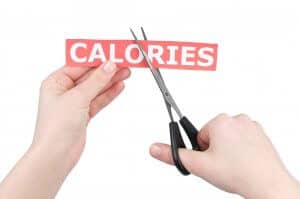
-
You Can’t Do It Forever
Calorie counting isn’t a precise science and can be very misleading about the quality of your Omad Diet.
Even worse, it is impossible to do it forever. That’s because people often get too drawn into calorie counting and develop severe anxiety about it.
Frankly, some people may go crazy trying to track calories. It can be something that takes up a lot of time that could otherwise be focused on other things.
-
Some Worry Too Much About Calorie Quantity

If you have ever counted calories, you know how difficult it can be to track your amount in your one meal.
You may find yourself adding random food to increase your count to your acceptable level.
Unfortunately, this approach forces people to focus less on the quality of their calories and more on the quantity.
And since I’ve already highlighted the importance of eating healthy calories, you probably already have a good idea of why this is so problematic.
People often fill up on empty calories instead of healthy ones and ruin their diet. Instead of counting calories, focus on the nutritional value to improve your chances of losing weight.
-
Depression and Anxiety are Linked With Calorie Counting

People who obsess over their calories often suffer from extremely negative self-perception. They may also fall into adverse behaviors and thought patterns that are hard to crack and replace with positive ones.
For example, I touched on how calorie counting can become an obsession and even an eating disorder in a previous section.
However, it is worth re-emphasizing just how damaging this behavior can be for someone trying to lose weight.
For example, let’s say you are trying to eat 1,500 calories in your daily meal.
Unfortunately, you went over that amount one day and ate 500 extra calories.
But, because you are obsessing over your calorie count, you get upset and angry with yourself.
One of the keys to long-term success on the Omad Diet is to keep a positive emotional state and well being.
-
Eating Loses Its Joy

Calorie counting can take all the fun and joy out of eating your one meal a day.
Instead of focusing on the rich texture of a healthy beef dish, you are worried about how a large serving might derail your calorie count.
Even worse, you may start treating eating like math and end up getting bored and hungry after finishing a meal.
The Omad Diet is about rewarding yourself with whatever meal that you choose and not worrying about restricting yourself.
It is about not worrying about calorie counting, restrictions, and truly feeling like your not even on a diet.
Ruining the fun of this diet will make it nearly impossible for you to enjoy it and can cause dietary fatigue very quickly.
Final Thoughts on Calorie Counting on the Omad Diet
I can’t stress the importance of establishing self-discipline and an eating structure while on the Omad Diet.
In my opinion, these are the factors that will lead to your long-term success.
Focusing too much on other things will only distract or deter you from the framework what you will need to achieve your goals.
The Omad Diet is about being free from the normal restrictions and stress of worrying about calories, meal restrictions, and many other dietary guidelines that become tiresome to follow.
Have more thoughts about counting calories while on the Omad Diet?
Leave a comment below or visit the Omad Diet Community Forums.
Resources
Eating Well: Seven Ways Nutrition Facts and Food Labels Might Trick You
U.S. News: What Food Labels Really Mean
NY Times: The Key to Weight Loss Is Diet Quality, Not Quantity, a New Study Finds
Diet Doctor: Why Calorie Counting is an Eating Disorder
Lifehacker: Why Eating Seasonally and Locally is Better for You
Seattle Times: Counting Calories is Not Key to Weight Loss



